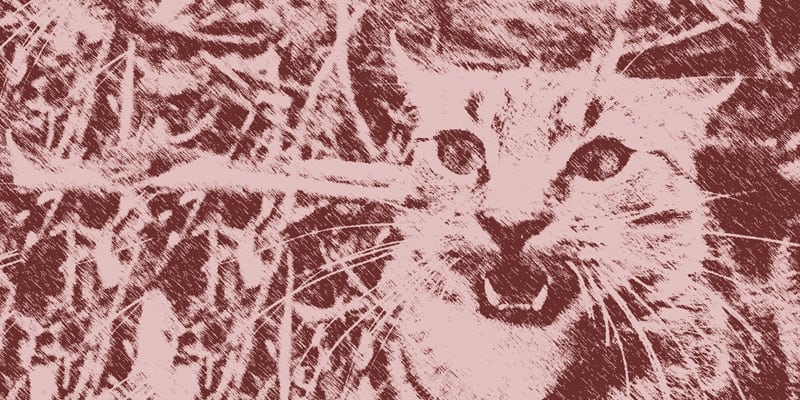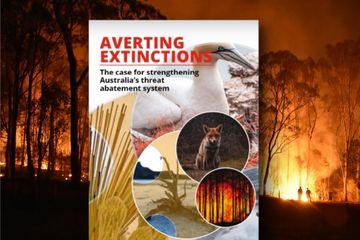Prevention is best, but where invasive species have established, eradication, if feasible, is far better than long-term containment and control. This is the well-known hierarchy of desirable responses to invasive species. With red imported fire ants, targeted for eradication in Queensland, eradication failure would lead to damage and control costs of an estimated $43 billion over 30 years[i], which makes the $200 million spent so far seem paltry.
Eradications are often challenging and costly, and governments are often loathe to risk failure by taking them on, particularly when invaders don’t have well defined economic impacts – the precautionary principle is applied to budgets rather than the environment.
Recent high profile failures such as Asian honeybees and myrtle rust, along with financial pressures, have made governments even more averse to attempting eradications. But there have been many successes. Globally, there have been about 1200 on islands alone.[ii] When sufficient resources, best practice and determination are applied, outstanding results are possible. Australia eradicated bovine tuberculosis and brucellosis in a more than 20-year effort, and hundreds of islands globally are now safe for threatened wildlife due to eradication of rats, cats and other invasive animals. Scientists have made great strides in understanding when eradication is feasible[iii] and in improving techniques.
To counter unfounded pessimism, the successes and their circumstances should be documented. On this blog, we will do just that, recording past successes and failures and new ones as they occur, keeping an updated tally. Please help us with this task by letting us know of any missing from our tables, which can be downloaded here.
Global trends
New Zealand leads the world in eradications. By 2005, it had completed more than 200 projects on small islands targeting 17 alien mammal species.[iv] By world standards, Australia is also an exemplar, with more than 30 national eradications (of mostly agricultural pathogens and insects) and more than 120 island eradications.
Eradication projects traditionally targeted agricultural invaders, particularly invertebrates and pathogens. There is an industry expectation that this will occur immediately that a new pest is detected, there is an immediate and easily quantifiable benefit, and the chances of success are reasonably high – because there is often early detection by farmers, host specificity (detection and treatment is commonly limited to one host), lack of a long term dormant phase (as occurs with weed seeds) and easily imposed movement/quarantine restrictions.
Most invasive animal eradication projects target islands because the water barrier limits the potential for regular re-invasion. By 2009, rodents had been eliminated from at least 330 islands worldwide, goats from 128, and cats from 74.[v] The world’s largest island eradication was of 79,000 goats removed from Santiago Island (58,465 ha, in the Galapagos Islands). [vi]

Australian eradications
Australia’s most ambitious island projects are eradication of foxes from Tasmania (6.8 million ha), and rabbits and rodents from subantarctic Macquarie Island (12,800 ha), where cats have already been eliminated. Cats or rodents have been removed from more than a dozen Australian islands of more than 1000 hectares.
But no established vertebrate animal invaders and just four invertebrates have been eradicated nationally.[vii] The most ambitious projects have focused on pathogens. Several agricultural diseases have been eradicated, some multiple times. (There are probably many agricultural invertebrate and pathogen eradications that are not recorded in the scientific literature.) The biggest and most expensive program was for bovine brucellosis and tuberculosis, costing $840 million over more than 20 years.
Weed eradications in Australia and globally have generally been much less ambitious and less successful, as remarked by Mack and Lonsdale:[viii] ‘The record of eradicating invasive plants…consists of few clear victories, some stalemates, and many defeats’. Rodents can be eliminated by one baiting program but weeds usually require a period of control because of seeds stored in the soil,[ix] a period that varies with seed dormancy and may be only a one year or up to several decades. Australia’s boldest national weed eradication project, for branched broomrape (a crop weed), was abandoned after $45 million was spent over a decade. Its seeds last up to 10 years in the soil, and the estimate was that $70 million would have to be spent over 70 years to complete its eradication from South Australia (based on 2008 funding levels).[x] Containment is now the goal.
There have been just five national eradications and eight are currently underway. The stand-out success was eradication of Kochia (Bassia Scoparia) from more than 3000 ha in Western Australia for $0.5 million.[xi] An admirably ambitious current program is the proposed elimination of 20 weeds from Lord Howe Island. The most ambitious weed eradication attempt globally has been the 50 year program in the US for witchweed, Striga asiatica a crop weed, which has been reduced from 200 000 hectares in the early 1970s to about 900 hectares, costing more than $250 million.[xii]
Australia can achieve much more for conservation by strategic eradications. Island eradications are a productive focus, with a high success rate, to protect endemic island species, provide sanctuaries for mammals threatened on the mainland and improve techniques.
There needs to be much more focus on eliminating emerging weeds and improving weed survey methods (to detect all outbreaks of a target weed and identify new weeds while they are most eradicable).
We need to persuade governments to take warranted risks in funding eradication of environmentally threatening invaders. There are questions about whether myrtle rust and Asian honeybees could have been stopped if optimally funded national programs had been immediately implemented.
The program for red-imported fire ants is an exemplar. It is expensive and may fail but the economic, social and environmental consequences of these ants warrant the attempt. We have to do much better at ensuring costs to biodiversity are influential in decision-making. If the fire ants had been environmental threats only, the program would probably have been abandoned. Other ant incursions with environmental consequences (such as yellow crazy ants in Queensland) have received only limited funding for eradication ($2 million in federal funding has been recently allocated to eradication in the Wet Tropics after the Queensland government withdrew funds).
To persuade governments to fund eradication opportunities, we need to better communicate their potential, technical feasibility and costs. We need to document both success and failure. Very few eradication programs are written up in the scientific literature. We need to foster a culture in which it is acceptable to attempt eradications when there is some risk of failure. The longer-term benefits of eradications achieved would outweigh the costs of some failures.
Tallying eradications
In tables you can download here, we have compiled as much information as we can find about eradication attempts in Australia (current to 2012), with the tallies in Table 1 below.
We aim to keep these tables current and make them as comprehensive as possible. Please help us with this project by emailing us with any information you have about eradication projects. Email ISC AT dev.env-invasives-lesley3.kinsta.cloud.
Table 1. Summary of eradication projects in Australia (successes, current projects and failures, 2000-2012)
[i] Antony G, Scanlan J, Francis A, Kloessing K, Nguyen Y. 2009. Revised Benefits and Costs of Eradicating the Red Imported Fire Ant. In: 53rd Annual Conference of the Australian Agricultural and Resource Economics Society, 10–13 February, Cairns.
[ii] Island Conservation and Invasive Species Specialist Group. 2013. Database of Island Invasive Species Eradications. <http://eradicationsdb.fos.auckland.ac.nz/pages/datasummary/>
[iii] Panetta D, Cacho O, Hester S, Sims-Chilton N, Brooks S. 2011. Estimating and influencing the duration of weed eradication programmes. Journal of Applied Ecology 48: 980–988.
[iv] Clout M, Russell J. 2006. The eradication of mammals from New Zealand islands In: F Koike et al. (eds) Assessment and control of biological invasion risks. Shoukadoh Book Sellers, Kyoto, Japan and IUCN, Gland, Switzerland. pp. 127-141
[v] Cruz F, Carrion V, Campbell K, Lavoie C, Donlan J. 2009. Bio-economics of large-scale eradication of feral goats from Santiago Island, Galapagos. Journal of Wildlife Management 73(2): 191-200
[vi] Cruz et al. 2009 (Footnote 5).
[vii] Four Canadian geese were shot in NSW in 2010. They are not counted as an established invasive species because they had not bred in Australia.
[viii] Mack R, Lonsdale W. 2002. Eradicating invasive plants: hard-won lessons for islands. In: D Veitch, M Clout (eds) Turning the Tide: the Eradication of Invasive Species. Invasive Species Specialty Group of the World Conservation Union, New Zealand. pp. 164-172
[ix] Panetta et al. 2011 (Endnote 3).
[x] Panetta et al. 2011 (Endnote 3).
[xi] Dodd J. 2004 Kochia (Bassia scoparia (L.) A.J. Scott) eradication program in Western Australia: a review. In: by B Sindel, S Johnson (eds) Proceedings of the fourteenth Australian weeds conference. Weed Society of New South Wales. pp. 496–499
[xii] Panetta et al. 2011 (Endnote 3)





